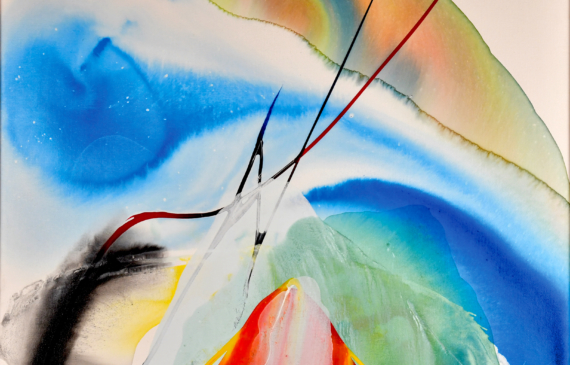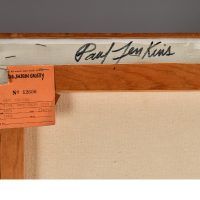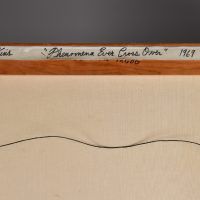


Paul Jenkins (American, 1923–2012)
Phenomena Ever Cross Over, 1969
Acrylic on canvas
34 H. x 33 W. inches
Influenced by the theories of the Swiss psychiatrist Carl Jung, the father of analytical psychology, the teachings of I-Ching, and the imagery of the Symbolist painter Odilon Redon, Paul Jenkins described himself as “an abstract phenomenist.” Consequently, his works embody the resulting inward reflection and mysticism fostered by these influences. His manner of dribbling paint resembled the work of Jackson Pollock with whom he maintained a close friendship. Jenkins would allow his paint to roll, pool, and bleed onto loose canvas. He would often use an ivory knife to guide the flow of paint. Employing such an unorthodox approach to applying paint, Jenkins is as intimately remembered for this process of “controlled paint-pouring” as he is with the transparent and almost translucent colors which characterize his works from the 1950’s. Jenkins was also close to Mark Rothko, but his overall style of painting more closely resembled that of Morris Louis and Helen Frankenthaler. A true avant-garde artist who came of age during the Abstract Expressionist movement, Jenkins produced works that can best be described as gorgeous. His billowing, undulating paint came to resemble “psychedelic landscapes” – or what Stuart Preston of the New York Times referred to as “Abstract Expressionist Rococo.”